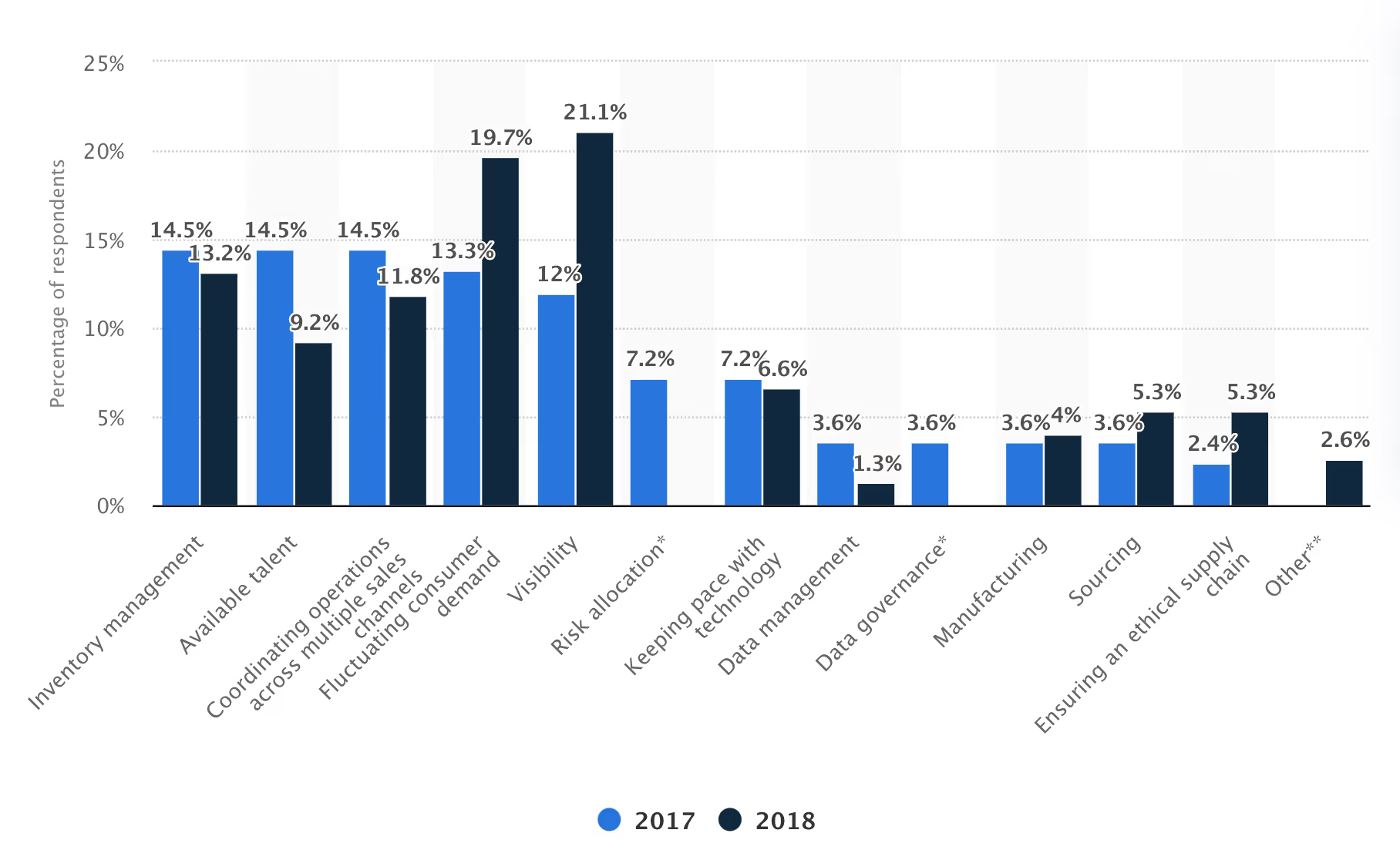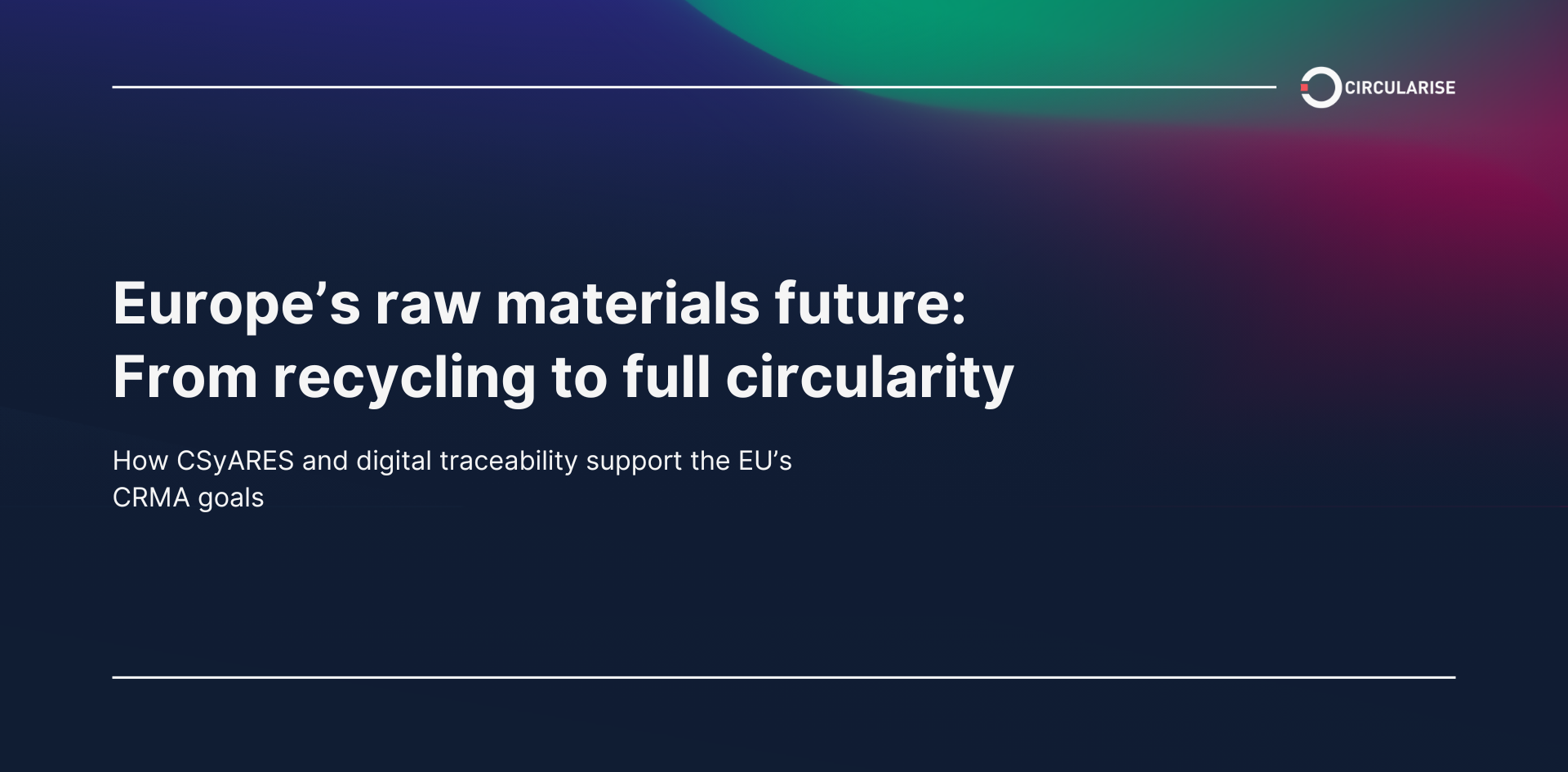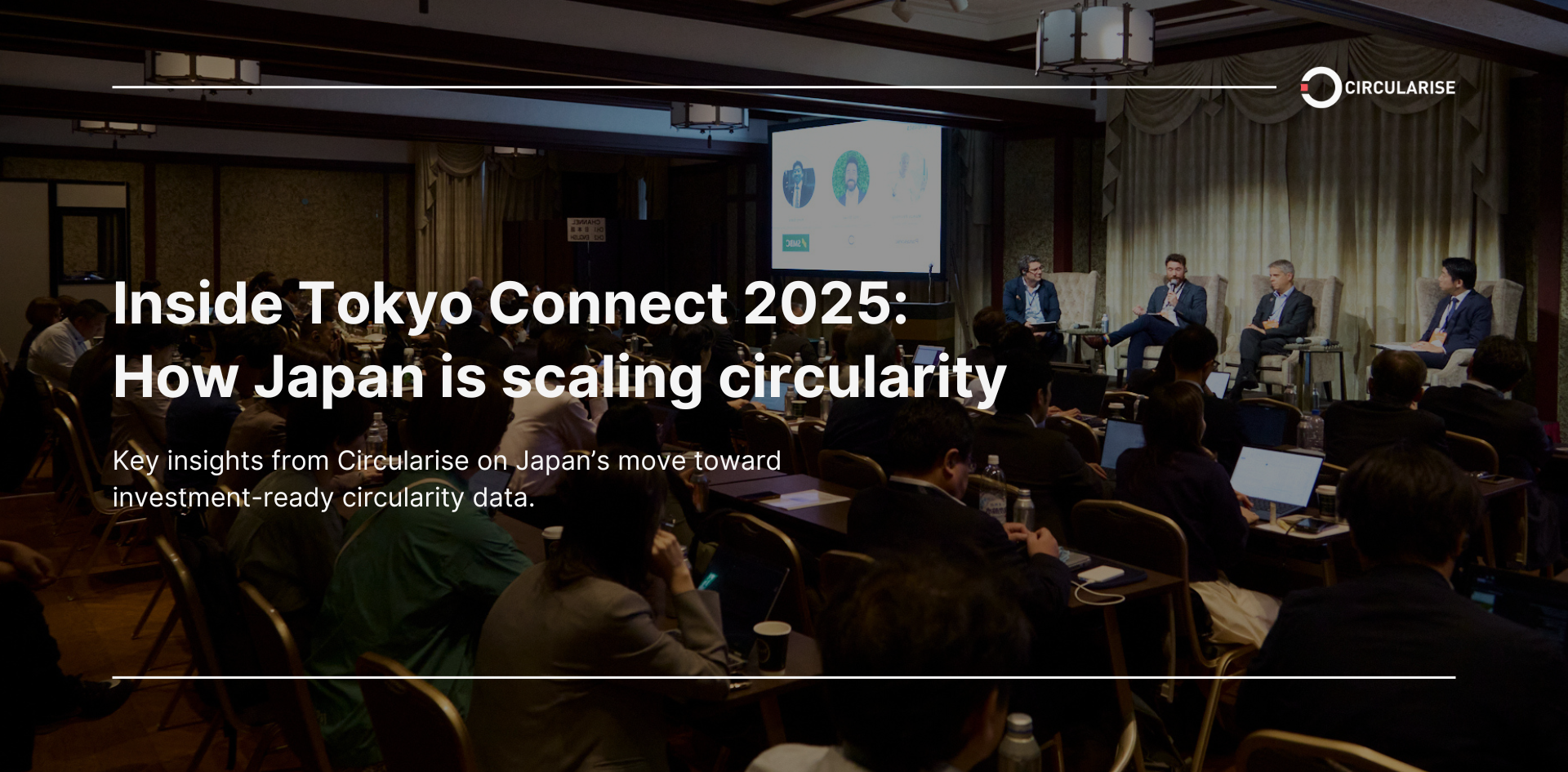Today, the complex and fragmented nature of global supply chains creates increasing levels of risk for multinational companies, making supply chain visibility crucial for every business including raw materials suppliers, OEMs, brand owners, and every tier in between.1
The data journalism site Statista cites a 2018 survey which “found that the biggest challenge (21.8%) for global supply chain executives was visibility.” 2

The pressure to understand supply chains comes from the ever increasing consumer and shareholder expectations, regulatory requirements, rising complexity and costs associated with managing the supply chain, globalisation of operations, and technological advancements including blockchain, DNA tracking, microbiome, Near Field Communication (NFC), and Internet of Things (IoT).
Without effective visibility into their supply chains, companies potentially expose themselves to risks, from which substantial legal, financial, and reputational damage could emerge.
This article takes an in-depth look at different aspects of supply chain visibility, including transparency and traceability. Here we also look into how blockchain can support visibility, and in turn how it can lead to better sustainability and circularity across supply chains.
Supply Chain Traceability
What is Supply Chain Traceability?
In this article we will use an adaptation of the widely accepted definition of supply chain traceability from the International Organisation for Standardisation (ISO), with the added key component of a sustainability focus:
Definition of Supply Chain Traceability
The ability to trace the history, application and location of that which is under consideration, to ensure the reliability of claims in the areas of human rights, labour (including health and safety), and the environment.
For products this can include the origin of materials and parts, the processing history and the distribution and location of the product after delivery.3
In the context of sustainability, supply chain traceability is a tool to assure and verify sustainability claims associated with materials and products, ensuring good practice for people and the environment.4
In simple terms, supply chain traceability is the process of tracing the provenance of products and their inputs, from the very beginning of the supply chain through manufacturing to end-use.
At the end, traceability of products, parts, and materials ensures the accuracy of the information, including:
- Origin
- Composition
- Processing history
- Quality
- Safety
- Labeling
With that data in hand, companies can serve customers better, identify unnecessary resource consumption, innovate rapidly, respond faster to changes in demand, and certify sustainable processes and products. (5)
Traceability for Sustainability
Traceability is becoming more common, and businesses are increasingly embracing it as part of their sustainability efforts. It plays a major role in verifying sustainability claims linked to their products, and provides a tool to monitor products and materials as they travel through the supply chain in order to ensure that responsible social and environmental practices are used at every step.
While traceability is the foundation of a sustainable product system for verifying social and environmental claims (e.g., certified, organic, carbon neutral), it cannot offer this verification on its own. Both new technologies and certification schemes play a vital role in verifying such information.
“Verification is essential. Even with a supply chain involving blockchains we want independent auditors for our system. And this is how we gain the trust and confidence of all our value chain members,” says Christopher McArdle, Borealis Vice President Polyolefin Strategy and New Business Development.
Download our guide “Avoid Greenwashing: 5 ways to make reliable sustainability claims.”
Governments are also looking to supply chain traceability to support a transition to a low carbon economy. One significant development in 2021 is that “the EU lawmakers called for the urgent adoption of an EU-wide regulation that will require companies to identify, address and remedy the environmental, social and governance (ESG) risks in their supply chains.” (6)
Next to that, in June 2021, Germany passed the “Gesetz über die unternehmerischen “Sorgfaltspflichten zur Vermeidung von Menschenrechtsverletzungen in Lieferketten” (Supply Chain Act). The Supply Chain Act imposes significant obligations on companies that source their products and services from developing and emerging countries and sell them in Germany to comply with human rights and environmental standards, and exposes them to potentially severe liability in the event of violations. (7)
Legislation such as the US Lacey Act (8) and the EU Renewable Energy Directive (9) are examples, beyond procurement, of how governments can promote certification or use sustainability standards to complement regulation.
Supply Chain Transparency
What is Supply Chain Transparency?
If traceability is about generating data about the origin or material composition of products, transparency is about communicating this information.
Supply chain transparency requires companies to know what is happening upstream in the supply chain and to communicate this information to the downstream stakeholders.
In this article we will use an adaptation of the definition of supply chain transparency from the Business for Social Responsibility (BSR) nonprofit organisation. BSR defines transparency by what data you are going to be transparent about, to whom, and when.10
- Who: Who needs to have access to supply chain information?
- What: What information is being shared, in what format, and for what purposes?
- When: When (in which conditions) should the information be shared?
The level of disclosure can range from sharing a code of conduct to disclosing traceability from the raw materials stage of the supply chain. Your level of transparency is specific to your business.
Over time, increased supply chain transparency can help organisations secure and maintain valuable partnerships, improve brand reputation, and increase consumer confidence. Researchers at MIT Sloan School of Management found that consumers are willing to pay 2% to 10% more for products when there is more supply chain transparency. 11
Can Blockchain help Supply Chain Traceability and Transparency?
Blockchain can support both traceability and transparency. However, in adopting blockchain technology for its supply chain, a company must first decide on the type of blockchain it would need to use. The two types to consider are private and public blockchains.
Private blockchains work for supply chains where every party knows and trusts one another. However, they do not offer the same level of decentralised security as their public counterparts, meaning the data entry can be altered by its owner. Generally, for supply chains with known and trusted players, a centralised database approach is more than adequate.
A public blockchain is a distributed and decentralised ledger—a digital system for recording transactions among multiple parties in a verifiable, tamperproof way. There is no central database or central governance in these blockchains.
For supply chains where participants are not known or trusted, public blockchain technology can add trust, transparency, and traceability. Organisations can digitise physical assets such as materials and record date, location, quality, certification, and other relevant information to a single shared ledger. Specifically, a public blockchain can deliver the following key benefits:
- Safety by design and fraud prevention: with a public blockchain it is virtually impossible to reuse the proof of a claim across assets (a problem commonly known as the "double-spending problem"). This principle forms the foundation of trust in data integrity.
- Governance and custodianship: oversight and implementation of the management, organisation, access and preservation of digital data.
- Immutability: the ability for a blockchain ledger to remain a permanent, indelible, and unalterable history of transactions. Immutability has the potential to transform the auditing process into an efficient, and cost-effective procedure, and bring more trust and integrity to the data businesses create and share every day.12
- Blockchain improves traceability of assets from source, to production, to end user, reuse and recycling.
- Blockchain allows data to flow seamlessly from supplier through to OEM, brand owner to the end consumer.
- A public blockchain provides complete data visibility and a single source of truth.
Using a public blockchain instead of a private blockchain can also help companies to save costs since they are not responsible for running and maintaining the entire blockchain network and can instead focus on the integration of their use cases into the blockchain and further innovation.13
Tips for Traceability and Transparency implementation
While blockchain has been praised as the solution for supply chain traceability and transparency — a technology cannot solve this problem in isolation. Any effective solution must involve the right mix of people, information, and technology to reach its goals.
For example, internal and external stakeholders should be involved, and the technology deployed should include solutions that generate, collect, translate, and communicate useful data across supply chains, as well as support appropriate decision making. (14)
Suppliers
As a supplier you want to identify what information can be shared publicly and what is too sensitive to reveal.
You also need to assess the availability of this information in your organisation. Where can it be found - is it in excel files or in your ERP system. Does the requested information exist at all?
It is important to start with this process early and work directly with your customers and technology providers to transform traceability and transparency into a decisive competitive advantage.
Brands and OEMs
As a brand owner you will need to communicate to suppliers so that they understand the benefits they will gain from traceability and transparency.
You also need to understand if they can meet the requirements, as well as educate them about the traceability and transparency schemes and their responsibilities. It is important to listen to them.
By connecting and communicating early and regularly, you can set up your company and its supply chain for success.
The Future
Today, global supply chains require new levels of visibility as companies create new products, add new partners, expand into new regions, and try to meet ever evolving regulatory and customer demands.
Traceability and transparency are becoming imperative for business success. From increased security to improved communication of data related to sustainability and ethical sourcing, supply chain visibility helps companies to better understand opportunities and respond to risks in their complex, multi-tiered, heavily regulated supply chains.
As we go forward, blockchain technology has powerful potential to improve visibility in global supply chains - but it can’t do it in isolation. The change will come from better cooperation between suppliers, OEMs, brands, regulators, and consumers themselves.
Companies who invest in increased transparency, traceability and measurements of data along supply chains will gain a competitive edge in meeting the ever-increasing consumer demand and regulatory requirements.
At Circularise, we are always open to discuss how to improve traceability and transparency across your supply chain operations. Don’t hesitate to reach out to our team through our contact page.

Circularise is the leading software platform that provides end-to-end traceability for complex industrial supply chains. We offer two traceability solutions: MassBalancer to automate mass balance bookkeeping and Digital Product Passports for end-to-end batch traceability.






